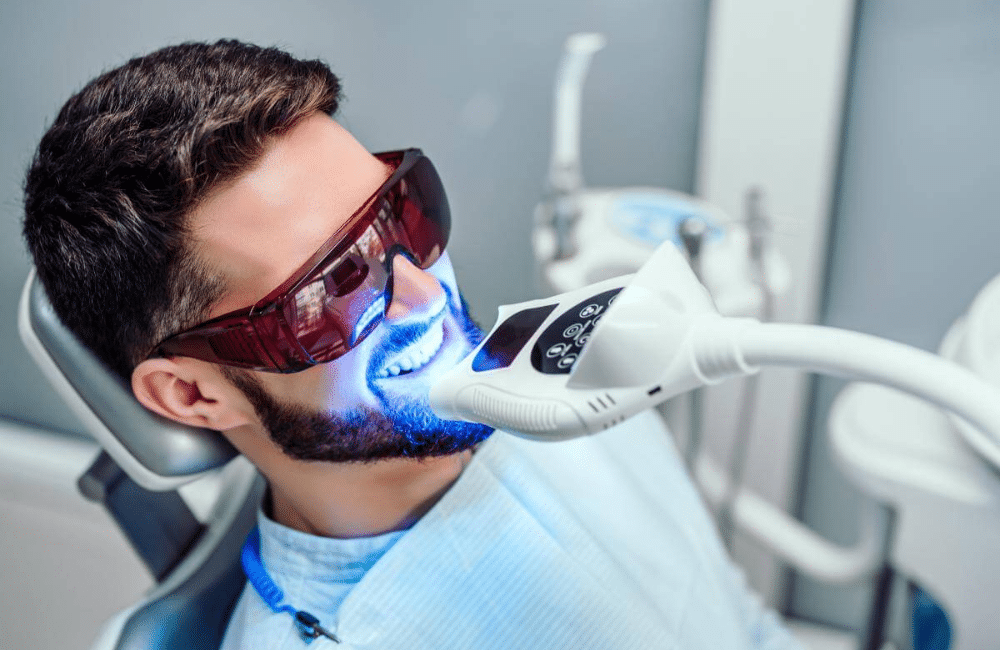Dentistry has come a long way in recent years, thanks to advances in technology and research. Innovations in oral care are not only improving the way we take care of our teeth but also enhancing the treatment options available for dental issues. From more effective treatments to faster and less invasive procedures, here are some of the latest innovations that are changing the world of dentistry:
1. Laser Dentistry
Laser technology is revolutionizing dentistry by providing a less invasive and more comfortable treatment option for patients. Laser dentistry can be used for a variety of procedures, including cavity removal, gum reshaping, teeth whitening, and treatment of infections. Lasers allow for precision treatment, minimizing damage to surrounding tissues, reducing discomfort, and speeding up the healing process. Many patients experience less pain and quicker recovery compared to traditional methods.
2. 3D Printing in Dentistry
3D printing is transforming the way dental restorations, such as crowns, bridges, and dentures, are created. With 3D printing, dental professionals can design and produce custom restorations with high precision and in a fraction of the time it would take with traditional methods. This technology also allows for more personalized care, as 3D scans of a patient’s mouth can be used to create a perfect fit. Additionally, 3D printing is being used to produce dental implants and even orthodontic aligners, making the entire process faster and more accurate.
3. Artificial Intelligence in Diagnosis and Treatment
Artificial intelligence (AI) is making its mark in dentistry, especially in the areas of diagnosis and treatment planning. AI algorithms can analyze X-rays, CT scans, and other diagnostic images to detect early signs of dental issues such as cavities, gum disease, or even oral cancer. This helps dentists make more accurate diagnoses and identify problems before they become severe. AI can also assist in creating personalized treatment plans, improving the overall efficiency and effectiveness of dental care.
4. Teledentistry
Teledentistry allows patients to consult with dental professionals remotely, making it easier to get advice and recommendations without needing to visit the office. Using video calls, photos, and digital imaging, patients can receive virtual consultations for minor concerns or follow-up care. This technology is especially beneficial for individuals in rural or underserved areas, as it gives them access to dental care that may otherwise be unavailable. Teledentistry has also become increasingly important in post-pandemic care, allowing patients to reduce unnecessary office visits.
5. Artificial Saliva and Advanced Dry Mouth Treatments
Dry mouth (xerostomia) is a common condition that can lead to cavities, gum disease, and other oral health problems. To help alleviate this condition, researchers have developed artificial saliva that mimics the natural moisture of the mouth. This innovative product helps provide relief for patients suffering from dry mouth, promoting healthier gums and teeth. Alongside artificial saliva, advanced treatments for dry mouth are being researched, such as medications that stimulate saliva production and specialized mouth rinses designed to protect oral health.
6. Smart Toothbrushes and Oral Care Devices
Smart technology has entered the world of oral hygiene with the introduction of connected toothbrushes and oral care devices. These devices are equipped with sensors that track brushing habits, provide real-time feedback, and offer personalized recommendations for better brushing techniques. Many smart toothbrushes also connect to apps, giving users a more interactive and detailed overview of their oral care routine. These innovations aim to encourage better oral hygiene by providing users with a more comprehensive understanding of their brushing habits and oral health.
7. Regenerative Dentistry: Stem Cells and Tissue Engineering
Regenerative dentistry is a cutting-edge field that aims to regenerate lost or damaged dental tissues, including enamel, dentin, and gums. Researchers are exploring the use of stem cells to regenerate tooth structures, which could one day eliminate the need for traditional dental fillings and implants. Tissue engineering techniques are also being developed to grow new gum tissue or repair damaged bone, potentially transforming how dental professionals address issues like gum recession and tooth loss. Although still in the experimental stages, regenerative dentistry shows promise in providing long-term solutions for oral health issues.
8. In-Office Teeth Whitening with LED Technology
LED teeth whitening treatments are becoming increasingly popular due to their effectiveness and minimal side effects. Unlike traditional teeth whitening methods, LED technology enhances the bleaching process by using light to accelerate the whitening agent’s effectiveness. This in-office treatment can provide immediate results, with patients seeing several shades lighter teeth after just one session. It’s a faster, safer, and more efficient method compared to over-the-counter products, offering a brighter smile in less time.
9. Virtual Reality (VR) for Pain Management
Dental anxiety is a common issue for many patients, often preventing them from seeking necessary care. Virtual reality (VR) technology is being used in some dental offices to help alleviate anxiety and make the dental experience more comfortable. By using VR headsets, patients can immerse themselves in calming, virtual environments during procedures, reducing stress and making it easier to stay relaxed throughout treatment. This innovative approach could be a game-changer for patients who experience fear or discomfort during dental visits.
10. Nanotechnology in Dentistry
Nanotechnology is revolutionizing various industries, and dentistry is no exception. This technology is being used to develop advanced materials for fillings, crowns, and dental implants that are stronger, more durable, and more natural-looking. Nanoparticles can also be used in the development of more effective treatments for gum disease, as they have the ability to target and kill bacteria on a microscopic level. As research continues, nanotechnology has the potential to significantly improve the performance and longevity of dental treatments.



No responses yet